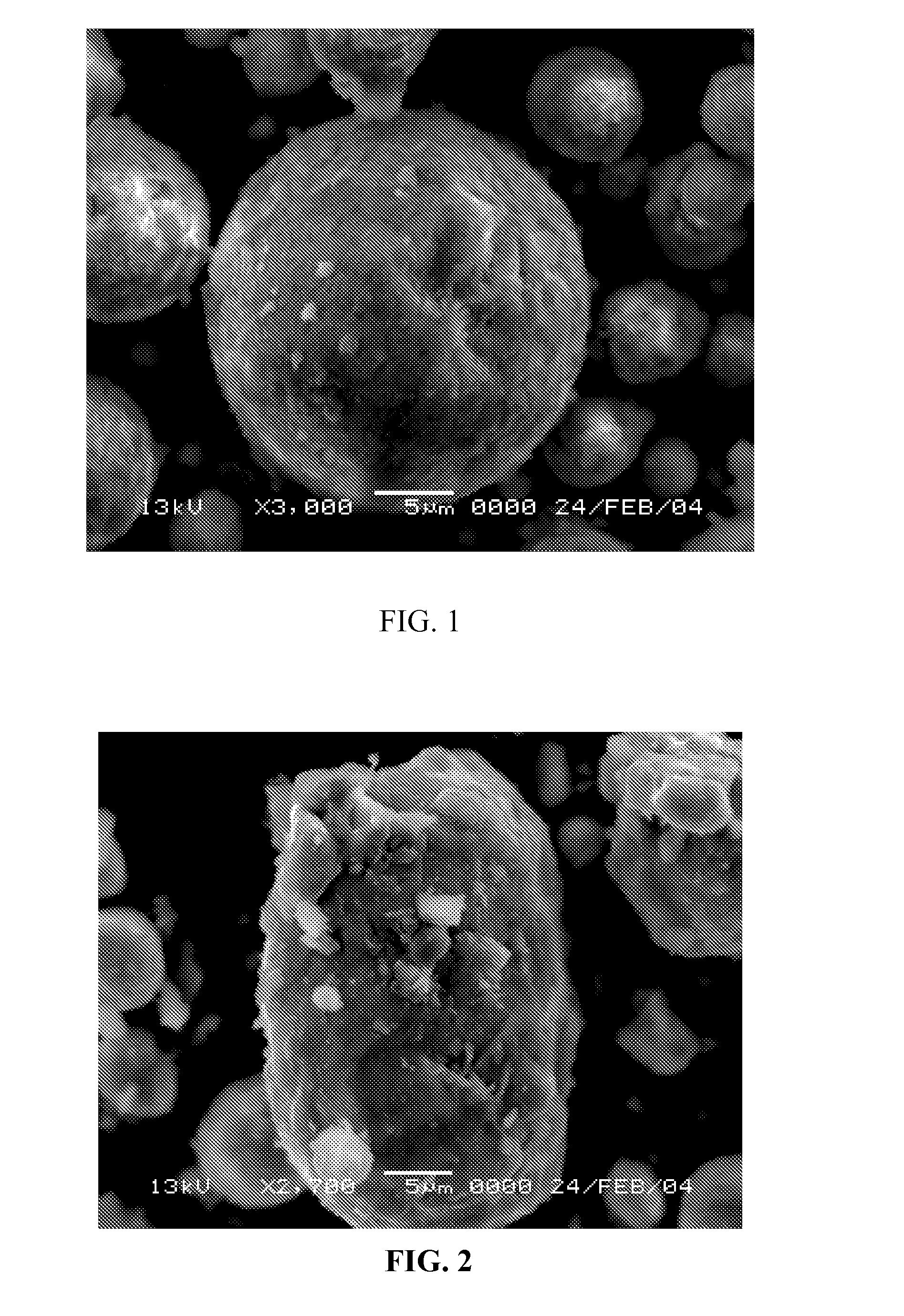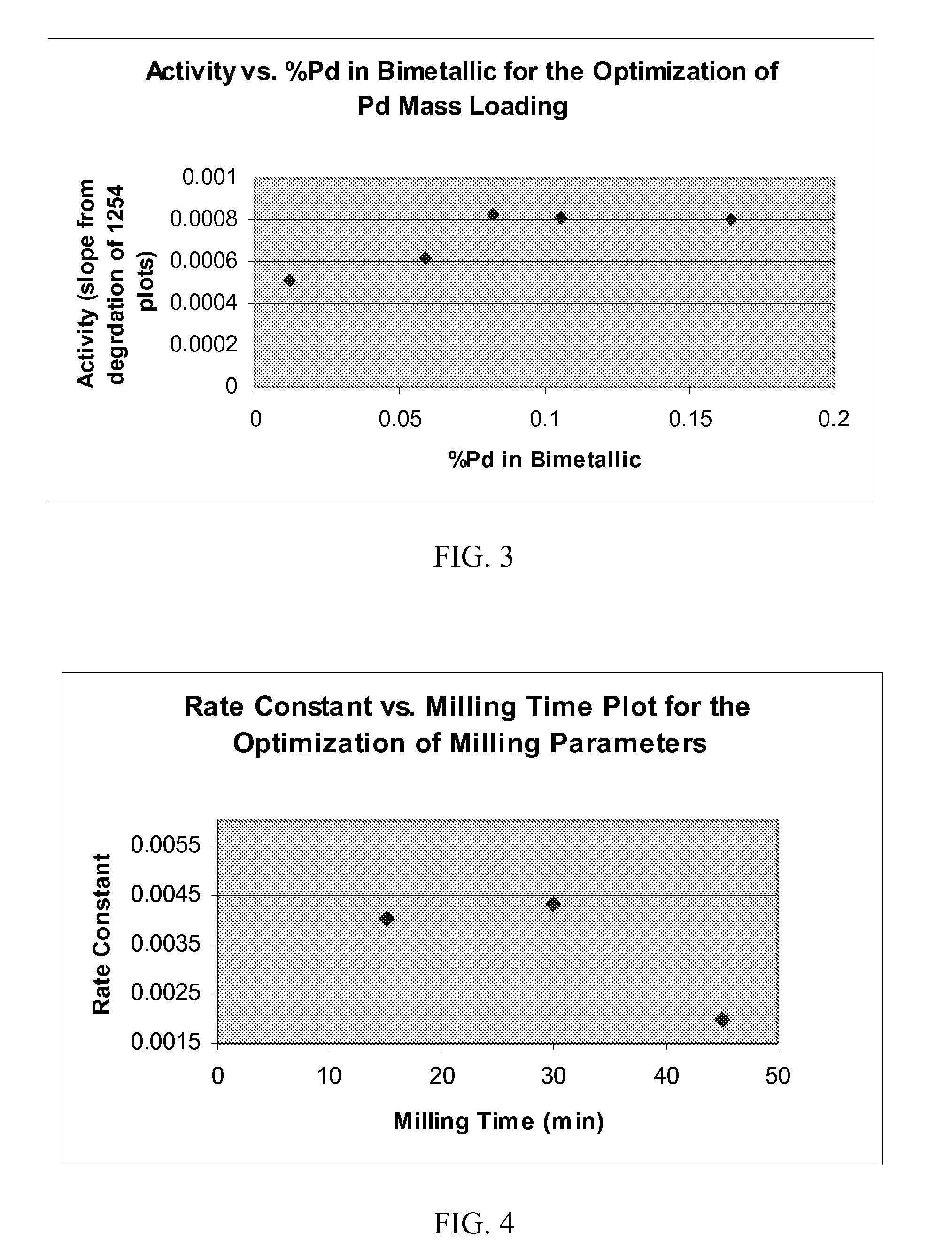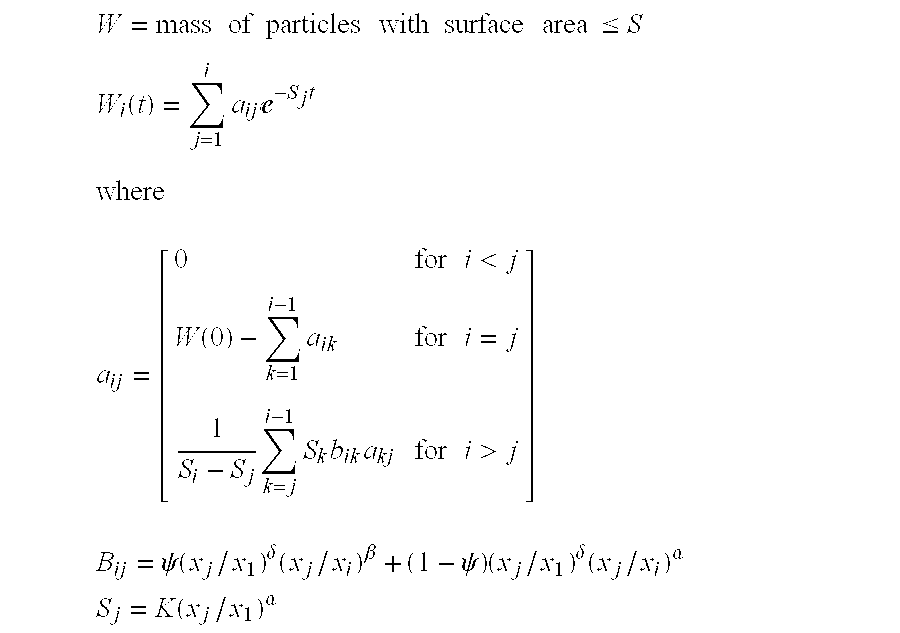Mechanical Alloying of a Hydrogenation Catalyst Used for the Remediation of Contaminated Compounds
a hydrogenation catalyst and mechanical alloying technology, applied in the direction of catalyst activation/preparation, metal/metal-oxide/metal-hydroxide catalyst, etc., can solve the problems of inefficiency and cost effectiveness of prior methods, and achieve the effect of excellent catalyst, cost effectiveness, and simple and cheaper
- Summary
- Abstract
- Description
- Claims
- Application Information
AI Technical Summary
Benefits of technology
Problems solved by technology
Method used
Image
Examples
example
Large Scale
[0068]For the scale up, a paint shaker fitted with custom plates to hold the milling canisters was chosen as the mill engine. Tungsten carbide is used as the milling vessel material in most high-energy, small-scale mills because it is extremely durable and does not break down over time or cause the introduction of contaminates into the milling material. The use of an extremely durable milling vessel was not necessary in this case because the introduction of some contaminates would not appreciably affect the reactivity of the metal, thus galvanized steel pipes (purchased from Ace Hardware with internal diameter-5.03 cm, length-17.8 cm) with steel end caps were used. Steel ball bearings (mass-22.3 grams each, volume-1.6 cm3 each) were chosen as the grinding matrix. Since the paint shaker chosen operates at approximately 600 RPMs (as opposed to 1250 RPMs observed for the Spex Centi-prep) longer milling times were necessary.
[0069]It has already been shown that, most often, th...
PUM
| Property | Measurement | Unit |
|---|---|---|
| particle size | aaaaa | aaaaa |
| temperature | aaaaa | aaaaa |
| surface area | aaaaa | aaaaa |
Abstract
Description
Claims
Application Information
 Login to View More
Login to View More - R&D
- Intellectual Property
- Life Sciences
- Materials
- Tech Scout
- Unparalleled Data Quality
- Higher Quality Content
- 60% Fewer Hallucinations
Browse by: Latest US Patents, China's latest patents, Technical Efficacy Thesaurus, Application Domain, Technology Topic, Popular Technical Reports.
© 2025 PatSnap. All rights reserved.Legal|Privacy policy|Modern Slavery Act Transparency Statement|Sitemap|About US| Contact US: help@patsnap.com



